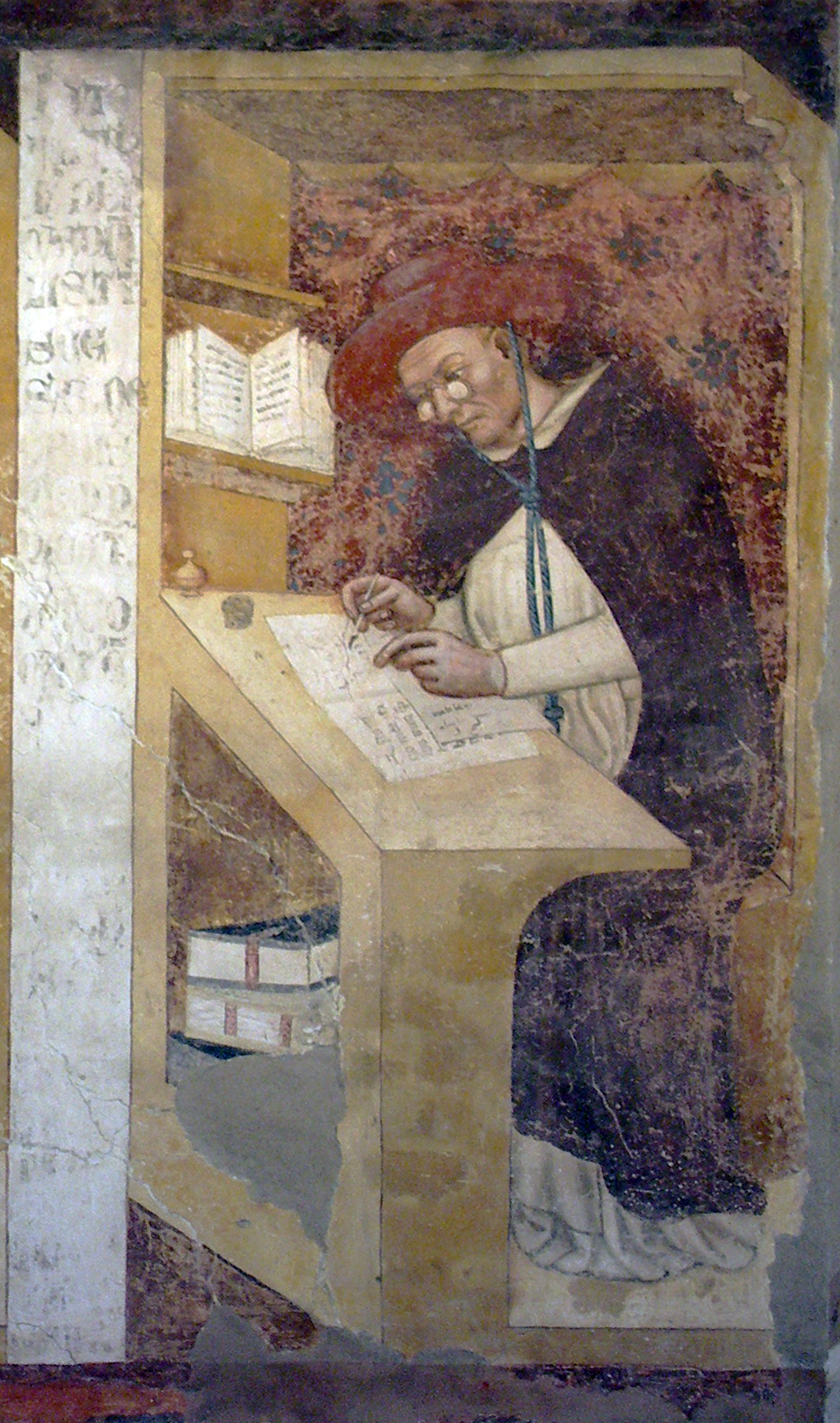Hugh will be the first to produce aconcordance to the Bible, to break the book down and rearrange itinto an alphabetical index of its words.
Hugh of Saint-Cher was the first person to produce a concordance of the Bible around 1230.
Hugh will be the first to produce aconcordance to the Bible, to break the book down and rearrange itinto an alphabetical index of its words.
Hugh of Saint-Cher was the first person to produce a concordance of the Bible around 1230.
In fact, this final detail is a mistake, an anachronism. Hugh died acouple of decades too early to have benefitted from this invention:two magnifying glasses bound together by a rivet in their handles.
The image of Hugh of Saint-Cher wearing glasses in the fresco at the former convent of San Niccolò, Chapter Room, Treviso, is an anachronism as their invention was decades following his death in 1263.
the fresco, byTomasso da Modena, was painted in 1352). It stresses theDominicans’ commitment to Bible study and to scholarship, and noportrait conveys this more than the image of Hugh of St Cher.
 Image from: https://commons.wikimedia.org/wiki/File:38_Ugo_da_San_Caro.jpg
Image from: https://commons.wikimedia.org/wiki/File:38_Ugo_da_San_Caro.jpg
Ugo da San Caro, serie dei Quaranta domenicani illustri, ex convento di San Niccolò, Sala del Capitolo, Treviso, 1352 (altezza di ciascun ritratto 150 cm circa) Image by Risorto Celebrano, licensed under the Creative Commons Attribution-Share Alike 3.0 Unported license.
Thought to be one of the first images of a person wearing glasses. Image dated 1352.
The idea of the index was invented twice in roughly 1230.
Once by Hugh of Saint-Cher in Paris as a concordance of the Bible. The notes towards creating it still exist in a variety of hands. The project, executed by a group of friars at the Dominican Friary of Saint-Jacques, listed 10,000 words and 129,000 locations.
The second version was invented by Robert Grosseteste in Oxford who used marginal marks to create a "grand table".
The article doesn't mention florilegium, but the head words from them must have been a likely precursor. The article does mention lectures and sermons being key in their invention.
<small><cite class='h-cite via'>ᔥ <span class='p-author h-card'>Aaron Davis</span> in 📑 Monks, a polymath and an invention made by two people at the same time. It’s all in the history of the index | Read Write Collect (<time class='dt-published'>02/15/2022 21:22:10</time>)</cite></small>